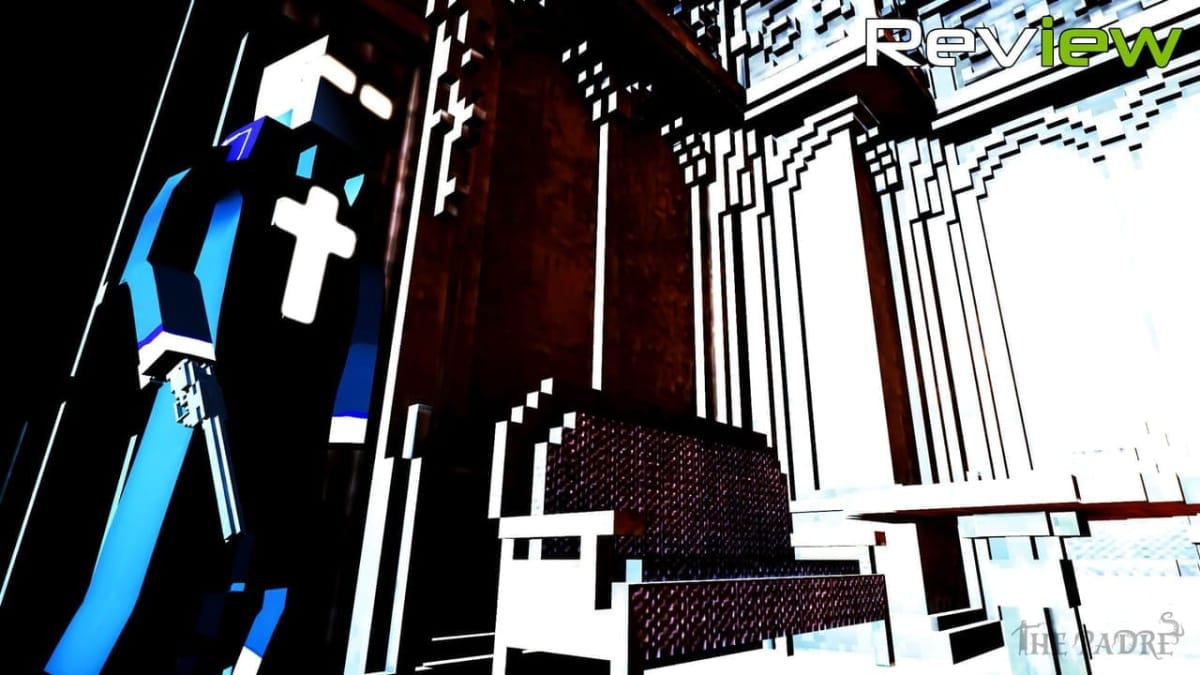It's #loveindies time, which means that TechRaptor is going all in on indie game coverage! That means previews, reviews and a bunch of new Coverage Club entries from our review team all week. Keep checking the site for a slew of articles talking about smaller releases that need more attention.
Carrying on a long-standing tradition of horror protagonists entering spooky seemingly-abandoned houses against their better judgment is The Padre. Designed by Shotgun with Glitters in the vein of classics such as the original Alone in the Dark, it veers away from cosmic horror and into more traditional supernatural horror. The Padre is a linear romp through a haunted mansion. The titular "padre" is a wisecracking priest named Alexander in search of another missing man of the cloth. Alexander must explore the mansion and piece together what happened to the priest while confronting his own past.
The Padre | Chilled to the Bone in the Dark
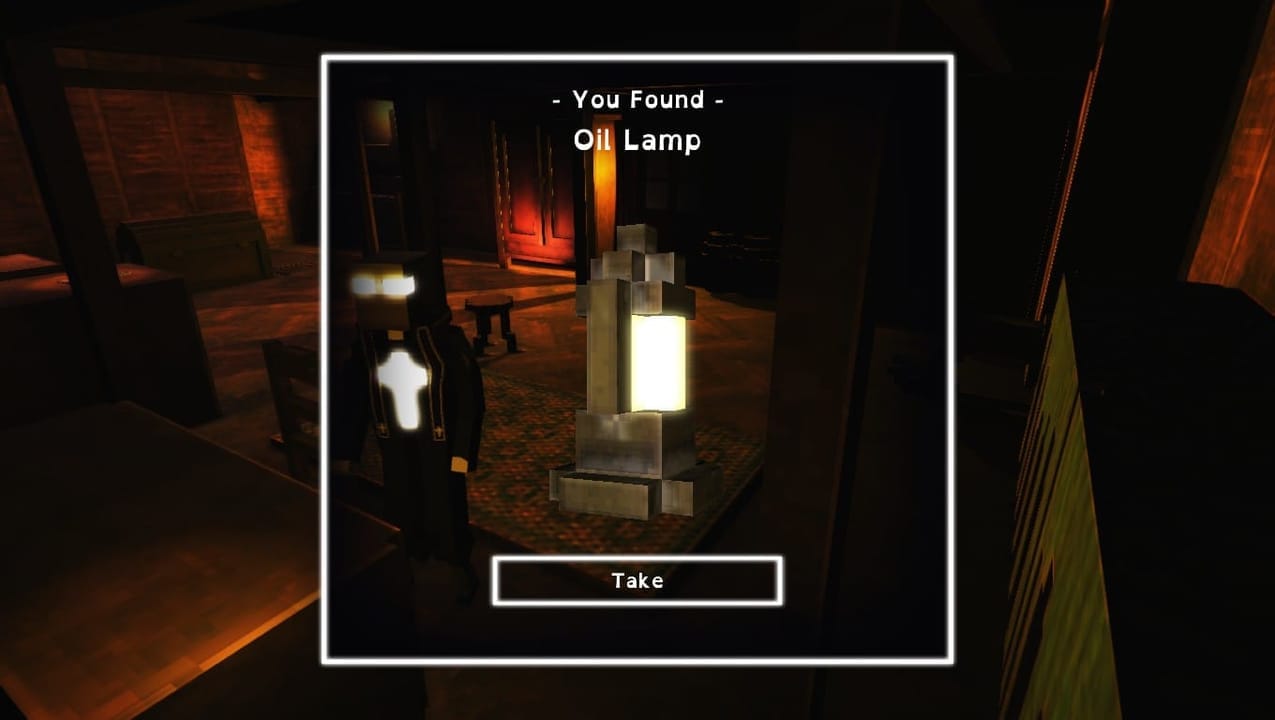
The game’s visuals are charming 3D blocky graphics. This helps its attempts to resemble the now very dated graphics in Alone in the Dark. Each room felt unique, with different puzzles, atmosphere, and aesthetics. Apart from the hallways, each room had some kind of story attached to it. Despite a "kiddy" feel with the graphics, it tackles some grim subject matters, including murder and body horror.
The use of mirrors to travel to an alternate world was a clever idea. This mechanic allows for unique area and puzzle design outside of the confines of a normal mansion. These mirror worlds tended to be small platforms made of cobblestone. Beyond the edges was the vast emptiness of space. While colorful, Alexander is by no means safe in this world. Navigating them is an anxious affair.
Make Things Known in the Dark
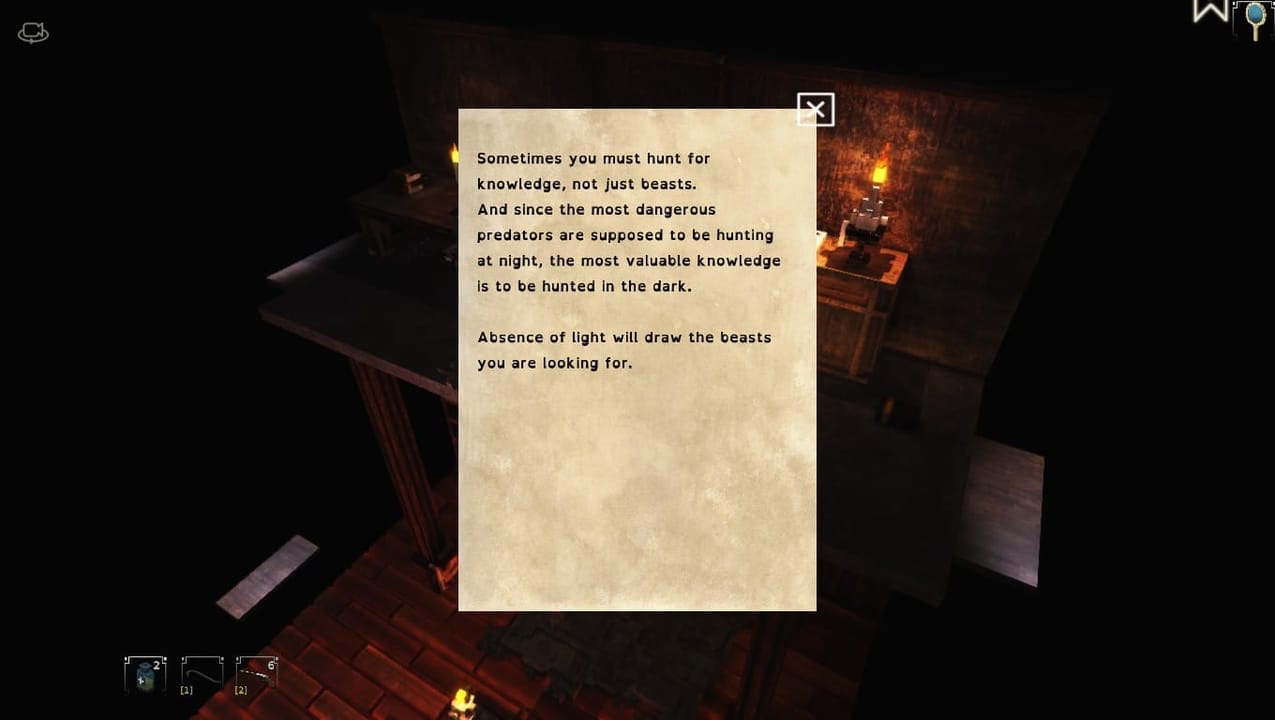
As for the puzzles themselves, most are relatively straightforward. The majority of the solutions involve finding and using the appropriate item in the right location. There are also a couple of puzzles involving untangling some knotted carpet to retrieve items. There are some genuinely creepy and unsettling moments and puzzles sprinkled throughout Alexander's night in the mansion. Paying attention and tracking down journals will help players figure out the solution much better than brute-forcing it.
An early optional puzzle asks you to effectively seek some knowledge in the dark. Alexander can blow out two of the candles, but the third stubbornly stays lit. Untangling the carpet to get a candle-snuffing tool allows you to finish the puzzle and acquire some background lore.
Combat Makes you Groan in the Dark
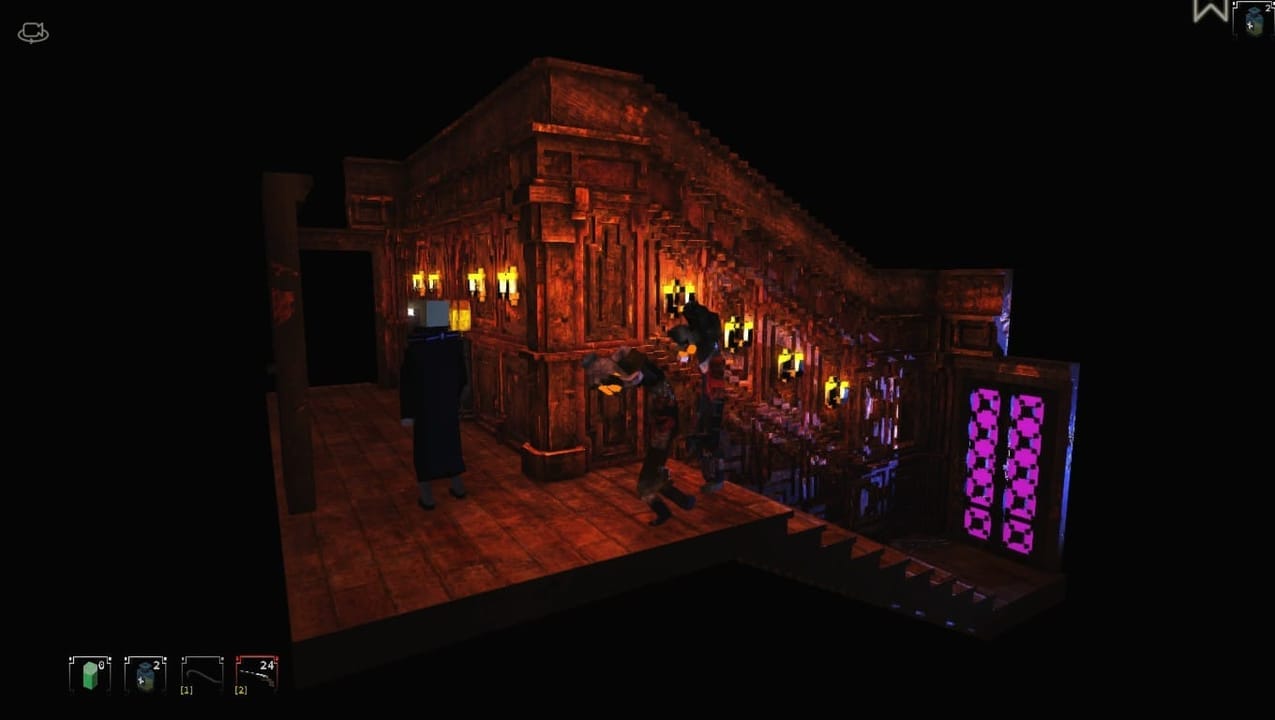
The very nature of a point-and-click game means that misclicks are commonplace. Occasionally, I floundered about hunting for specific pixels to execute an action or grab an item. Combat is tedious, a problem also plaguing Alone in the Dark. The player needs to keep their mouse on an enemy in combat, but flailing horrors and changing camera angles make this difficult. If the cursor stops touching the enemy, the attack stops charging. I had repeated misclicks trying to attack an enemy, instead simply walking past them and taking damage.
In lieu of firearms, I stuck with the crowbar. Blocking a monster's strikes proved more valuable than the advantage of more range. While a single zombie generally proved little threat, The Padre enjoys shoving you into small spaces with two or more wobbling threats. Most of my deaths came from getting stuck in a corner and mauled to death. Enemies strike quickly and the hitstun is typically too long to escape a bad situation. I never used the demon transformation mechanic since there was so little incentive.
Though many classic survival horror games are punishing when the player dies (such as the original Resident Evil), this is not the case in The Padre. Alexander can take a fair amount of damage before his last rites. When he dies, he fills a bottle with Angel's Tears and teleports to a mirror world. This mirror world allows them to enter the room in which they died or go back to a previous room. When the bottle fills up with enough deaths, the game is over.
Due to the number of instant-kill mechanics and no manual saving, this was a smart design decision. Praying at crosses or playing the Redemption Sonata empty the bottle, but you can't do that forever. Despite a few frustrating points (small rooms and narrow halls with enemies were the banes of my existence), the game was not particularly difficult. Medicine is everywhere, death is cheap, and the random encounters occasionally drop supplies.
Inconsistent Tone in the Dark
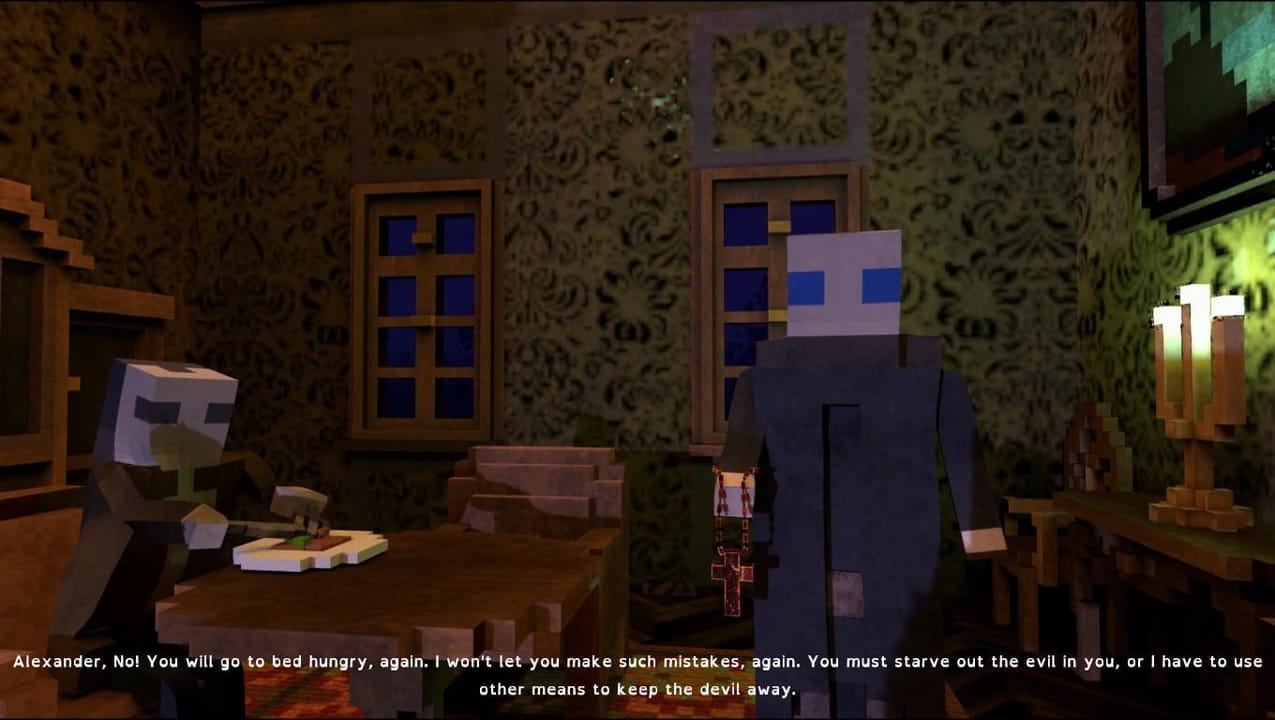
Though the game nails its atmosphere, the story suffers from tonal dissonance. Alexander snarks throughout the game, but his irreverence and pop culture references stand at odds with the intended seriousness of the story. I wish the story either totally leaned into parody or played its horror completely straight. It felt like The Padre couldn't decide between either and instead tried to choose a happy medium. Ultimately, I think this decision hurt the experience. In some grim and gruesome moments, Alexander's pithy dialogue makes it difficult to treat the situation with proper gravitas.
I completed it within the span of a couple of hours, but genre newbies might spend closer to five or six hours. Because of the game’s short length, the pacing is a bit weak. The story explains little, the characters feel underdeveloped, and the final twist comes out of left field. Many character motives are uncertain. Benedictus, for example, raised Alexander. They have an antagonistic relationship, but the flashbacks did little to establish Alexander's seething hatred for Benedictus. The mystery of Alexander's brother Mario is built up, but the payoff by the end of the game felt unsatisfying. While sometimes things are best left unexplained, the narrative left many questions with insufficient answers.
The Padrew Review Final Thoughts | Play With the Lights Off
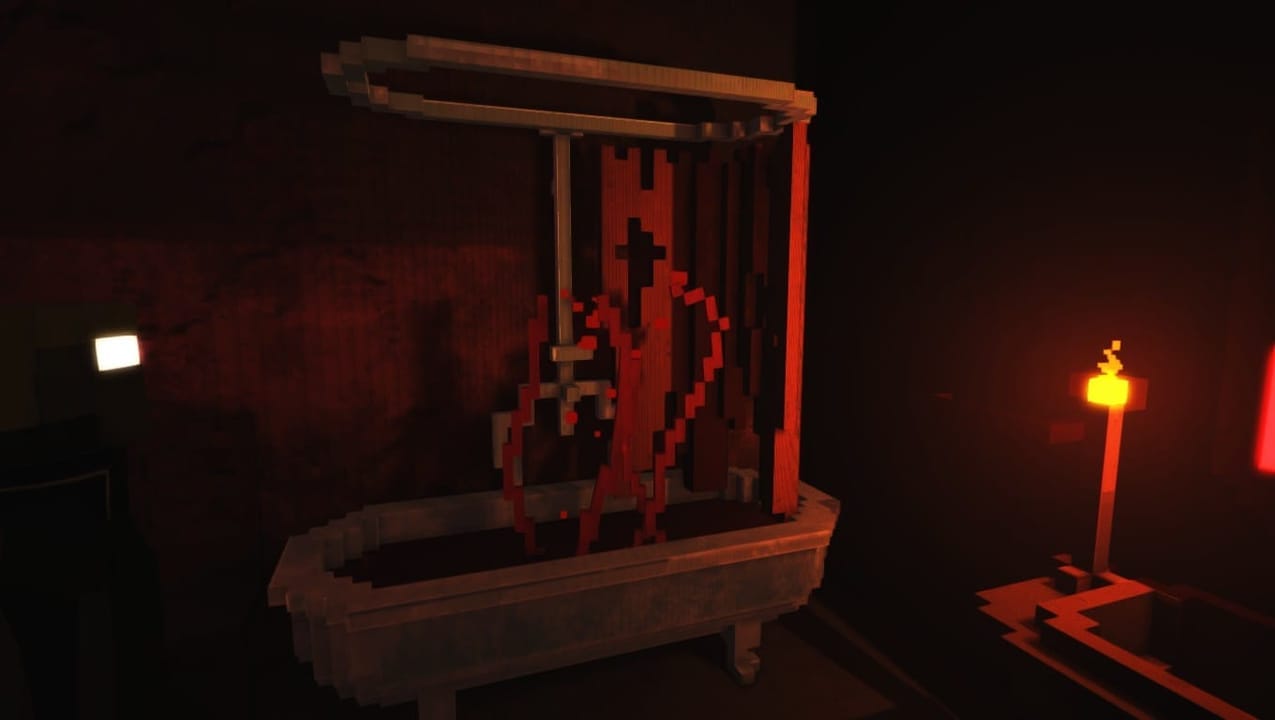
The Padre is under ten hours and linear. There isn’t much of a reason to replay it except for getting all of the achievements. For a quick evening romp, however, you could certainly do worse. Despite a few rough edges, The Padre can definitely scratch a nostalgic itch. Its artistic style is excellent and almost comforting. Though its controls take some getting used to, they generally do work as intended. The Padre conforms to many old horror game tropes (for better or worse) and performs as expected.
There's a residence, and there's definitely evil lurking in there.
TechRaptor reviewed The Padre on PC via Steam with a copy provided by the publisher.
Review Summary
Pros
- Good Atmosphere
- Charming, Nostalgic Graphics
- Solid Homage to a Bygone Era
Cons
- Weak, Confusing Plot
- Frustrating Combat
- No Manual Saving
Have a tip, or want to point out something we missed? Leave a Comment or e-mail us at tips@techraptor.net
